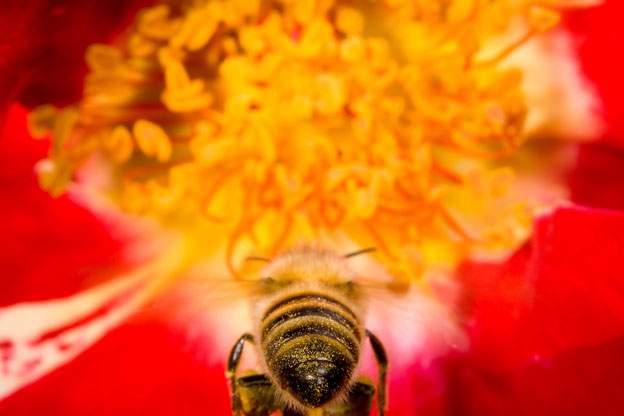
Most flowers, pollinated by bees and other insects, offer nectar in exchange for help with reproduction. Nectar provides insects with two essentials: energy and water.
To conserve this valuable stuff, plants often locate their nectar-secreting glands deep inside a flower. This protects the nectar from evaporating or rinsing away in rain, and makes it more likely that insects will brush pollen from stamens as they bumble to find the nectar. Flowers broadcast their hidden treasure with bright colors, sweet scents and beautiful markings. However, flowers' markings are more than cosmetic, often explicitly directing insects to the pollen and nectar at the flower's center. On an iris, for example, the yellow stripes on the lower purple petals point the way. For a bee in flight, flowers' markings work like lines marking airport runways, indicating where to land and how to taxi to the nectar.
Here's more evidence that flowers put up signposts for insects. Humans perceive the red end of the color spectrum better than insects, but insects perceive the blue end of the spectrum better. Bees and other insects can see ultraviolet colors that we can see only with the help of special equipment. Some flowers that appear to us in daylight as one solid color, like the yellow evening primrose, reveal bold markings under ultraviolet light.
These ultraviolet landing strips provide flowers with an evolutionary advantage, increasing the chance that insects will pollinate the flowers successfully. Fortunately, our ability to differentiate colors along the spectrum overlaps enough with insect vision that we can see most flowers' markings, not as landing strips, but things of beauty.









